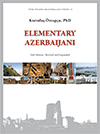Course Description
The set of teaching materials consists of a textbook and two audio CDs. The audio materials contain recordings of the alphabet, all of the conversations, and all of the audio drills. There are twelve main units and four review units. Each main unit consists of the following sections: one or more core conversations around which the other sections of the unit are built, several grammar points, various drills and exercises, class activities, reading texts, vocabulary and audio drills. Many units also include cultural notes, games, translation exercises, and sections on pronunciation, phonology, morphology, and lexicon. Each main unit focuses on certain social functions and grammar points and revolves around particular topics. The content of each unit is specified in the book's plan that follows the preface.
Conversations on topics assigned to each unit are the centerpieces of the unit. The language of these conversations is natural, including vocabulary, phrases and usages encountered in everyday use. Yet, the language is somewhat simplified. Most conversations are short and can be memorized easily. An English translation is provided for each conversation. Every core conversation in the book is recorded so that learners can listen to them repeatedly. Conversations are usually complemented by supplementary vocabulary, useful expressions, cultural notes, and drills. Various drills, such as transformation, translation, substitution, or response drills follow each conversation. These drills are based heavily on the frequently-used language patterns encountered in previous conversations.
Each grammar point covers one particular grammatical item, and grammatical explanations are further strengthened by exercises and examples in Azerbaijani. An English translation of each sample sentence is also provided. Since there are no comprehensive grammar books in English on the Azerbaijani language, grammar explanations are more in depth than in other comparable textbooks. Bullet points are used to illustrate important explanations or additional features of an item. It should be pointed out, however, that the grammar sections are not necessarily comprehensive.
Drills and pair-work exercises are an important means for reviewing the topical or grammatical material presented in conversations. Repetitive drills allow learners to practice important patterns. Through repetition, learners acquire the skills to generate similar structures spontaneously. The drills help the learners understand and generate similar structures and provide them with a basis to build on in the newly acquired language. The cues for substitution drills are given in Azerbaijani in the first five units, but in English in the following units.
Reading texts written, for the most part, specifically for the textbook. Those in the second half were taken from written or spoken native sources. Most of the reading selections enhance the grammatical or topical points covered in the same or previous units, but the level of difficulty in reading selections tends to be higher than in other sections of the same unit.
Word focus sections are about Azerbaijani vocabulary in general. Detailed explanations on many commonly used words or derivative suffixes are included in these sections. Dearth of English cognates makes it harder for the learner to acquire a sizable Azerbaijani vocabulary in a short period of time. Word focus sections are designed to help students address this challenge.
Cultural notes include important information about Azerbaijani culture. These notes are most valuable for those who have never been to Azerbaijan but who intend to go there after acquiring basic Azerbaijani language skills. Some of these notes also provide native vocabulary items related to a particular topic. Since language is a means of expression in a specific cultural setting, it is important for learners to familiarize themselves with the Azerbaijani cultural values expressed through the Azerbaijani language.
Games used in a classroom setting are educational as well as fun.
Functions covered in a unit may be presented in conversations, texts, or other materials, or introduced separately.
There are a number of exercises within each unit. There is also a separate section of exercises at the end of each unit. Many exercises are mechanical, and some are communicative in nature. There are at least two translation exercises in each unit. All of the exercises in a unit relate to points covered in that unit.
Vocabulary is given particular importance. At the end of each unit a list of words is provided, consisting of new and important words that are used frequently. Learners are urged to memorize them.
Audio drills are designed to be used with the audio recordings. These drills provide a fun and effective way for learners to reactivate and strengthen the knowledge acquired in each unit. An answer key to the audio drills is provided at the end of the book.
Each review unit is designed to reinforce the topics, functions, and grammar points covered in the preceding three units. Review units include ten to fifteen exercises similar to those found at the end of each main unit.
The Answer Key to the Audio Drills at the end of the book provides answers to all the audio drills.
The Answer Key to the Exercises provides answers to all the exercises in the book.
The Azerbaijani-English Glossary includes about 1,600 most freequently-used words.
The English-Azerbaijani Reverse Glossary mirrors the Azerbaijani-English glossary, providing easy access to the Azerbaijani vocabulary items.
The Index facilitates searching for grammatical structures, semantic categories, and important Azerbaijani suffixes.



 Dr. Kurtuluş Öztopçu is currently retired from teaching. For many years, he taught various courses related to Turkic languages at Boğaziçi University in Istanbul, UCLA and UC Berkeley. He is the author of several scholarly books and articles all relating to Turkic languages, including Dictionary of the Turkic Languages and Elementary Turkish.
Dr. Kurtuluş Öztopçu is currently retired from teaching. For many years, he taught various courses related to Turkic languages at Boğaziçi University in Istanbul, UCLA and UC Berkeley. He is the author of several scholarly books and articles all relating to Turkic languages, including Dictionary of the Turkic Languages and Elementary Turkish.